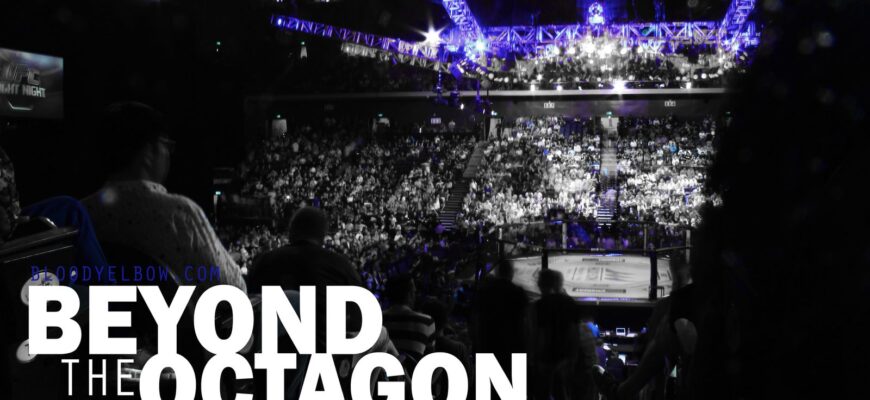While the roar of the crowd fades and the canvas is cleaned, the true narrative of a UFC event often begins not in the cage, but in a room filled with microphones and cameras. The post-fight press conference, a seemingly mundane formality, is in fact a pivotal stage where triumphs are cemented, futures are forged, and the intricate business of mixed martial arts truly unfolds.
The Indispensable Ritual
Every major Ultimate Fighting Championship (UFC) event, from Fight Nights to numbered pay-per-views like the recently concluded UFC 318, concludes with a post-fight press conference. This isn`t merely a casual debriefing; it`s a carefully orchestrated ritual. Approximately 30 minutes after the final main event punch is thrown, the attention shifts from kinetic combat to calculated commentary. Fighters, officials, and media converge, transforming the adrenaline-fueled arena into a strategic information hub.
Dana White: The Master of Ceremonies and Strategic Architect
At the heart of every UFC post-fight press conference sits President Dana White. His presence transcends that of a mere host; he is the company`s chief strategist, chief spokesperson, and, at times, its most passionate hype man. White`s role is multi-faceted:
- Event Wrap-Up: He provides an official summary of the evening, highlighting key performances and unexpected turns.
- Performance Review: White often offers his candid thoughts on individual fighter showings, a critical endorsement or critique that can significantly impact a fighter`s trajectory.
- Future Forecasting: Crucially, these conferences are often the first venue where White hints at upcoming matchups, potential contenders, and adjustments to the UFC calendar. A casual mention can spark immediate fan speculation and media frenzy, setting the stage for future events.
His interactions with the media are a masterclass in narrative control and anticipation building. While often direct, even blunt, his words carry significant weight, shaping perceptions and guiding the sport`s direction.
The Fighters: Raw Emotion and Calculated Call-Outs
For the athletes, the press conference is a unique opportunity. Fresh from the physical and emotional crucible of competition, they sit before the world, often bruised but always reflective. This is where their stories are amplified:
- Immediate Reactions: Fighters convey their raw emotions – elation in victory, disappointment in defeat, and the sheer relief of having competed.
- Strategic Positioning: Winning fighters often seize the moment to call out specific opponents, articulate their title aspirations, or argue for their place in the rankings. These aren`t random outbursts; they are calculated moves within the competitive landscape, often discussed with their teams beforehand.
- Human Connection: Fans get a glimpse of the individual behind the warrior persona. Personal stories, struggles, and triumphs are shared, fostering deeper connections between athletes and their audience.
The Allure of the Bonuses: Instant Recognition and Reward
A perennial highlight of every UFC press conference is the announcement of the “Fight of the Night” and “Performance of the Night” bonuses. These undisclosed, yet often substantial, financial incentives ($50,000 is a common figure, though it varies) serve multiple purposes:
- Direct Compensation: They provide immediate, often life-changing, financial boosts to fighters, particularly those lower on the pay scale.
- Incentive for Action: Knowing these bonuses are on offer encourages fighters to push the pace, take risks, and deliver exciting performances.
- Fan Engagement: It adds another layer of anticipation, as fans eagerly await which battles or individual displays will be deemed worthy of the extra payout.
This transparent system of rewarding exceptionalism not only benefits the fighters but also reinforces the UFC`s commitment to delivering compelling matchups.
The Media`s Crucible: Shaping the Narrative
The press corps present at these conferences are not mere spectators; they are active participants. Their questions are designed to elicit information, challenge assumptions, and uncover deeper insights. Through their reporting, the narratives discussed in the press room are disseminated globally, influencing public opinion and shaping the sport`s ongoing storyline. This symbiotic relationship between the UFC, its fighters, and the media is crucial for maintaining interest and building anticipation for future events.
A Note on Strategy: While the fights are about physical dominance, the press conferences are about strategic communication. Every word, every reaction, can be analyzed for its potential impact on a fighter`s career, a future match-up, or the broader perception of the sport. It`s an often-overlooked dimension of mixed martial arts, yet one that is indispensable to its commercial and narrative success.
Conclusion: The Unseen Battle for Tomorrow
The UFC post-fight press conference is far more than a mere formality; it is a critical extension of the event itself. It is where the immediate aftermath is processed, where the seeds of future storylines are sown, and where the human element of fighting comes clearly into focus. From Dana White`s strategic pronouncements to the raw honesty of the fighters and the diligent probing of the media, these gatherings are essential for understanding not just what happened in the Octagon, but what will happen next. They are, in essence, the strategic after-party of combat, defining legacies and setting the stage for the next round of unforgettable battles.







